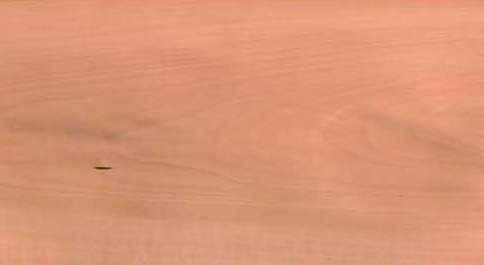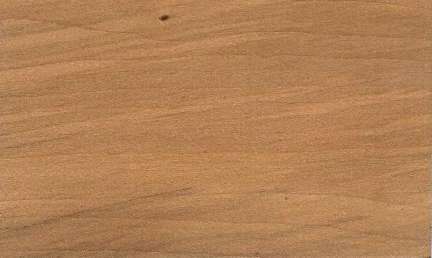     
Pear (Pyrus communis)
Family: Rosaceae
Common names: Choke-pear, Common pear, Parontrad, Pear, Peartree, Pearwood
Distributed in: France, Germany, United Kingdom, United States (Eastern Europe, North America, Oceania and S.E. Asia, Western Europe)
Distribution overview: Native to Britain, the species has a wide distribution throughout Europe and parts of Asia. It has naturalized in the United States and can be found from Maine to Missouri, Florida, and in the north western region of Texas. It grows on moist soils near houses, fences, roadsides, clearings, and borders of forests. Pear trees are reported to have been cultivated since ancient times and numerous varieties have been been developed from the species and its hybrids.
Common uses: Bearings & bushings, Brush backs & handles, Cabinetmaking, Carvings, Decorative veneer, Engraving, Furniture, Handles: general, Marquetry, Mathematical instruments, Moldings, Musical instruments , Musical instruments, Musical instruments: piano, Musical instruments: strings, Rulers, Sporting Goods, Tool handles, Turnery, Veneer, Veneer: decorative
Product sources: Material with the most superior properties comes from Germany and France. Supplies are limited since the tree is valued for its fruits, and only old trees are typically harvested for timber production, much of which is exported to Europe. Veneers are the main form of Pearwood imported into the United States and their prices are usually high. Domestic supplies in the US are scarce and are usually of poorer quality than material from the European market.
Environment profile: Status has not been officially assessed
Tree size: Tree height is 20-30 m
Colors: the heart isYellow, Yellow to golden-yellow to orangeand the sapwoodRed, White.The grain isWavy, the textureVery close and the lusterLustrous
Natural durability: Resistant to attack from powder post (Lyctid & Bostrychid) beetles, Very durable
Odor: No specific smell or taste
Kiln Schedules: UK=A US=T2D4/T2D3 Fr=1
Drying Defects: Ring Shakes, Severe twisting/warping
Ease of Drying: Slowly
Comments: General finishing qualities are rated as good
Blunting Effect: Moderate
Boring: Very good to excellent results
Carving: Excellent weathering characteristics
Cutting Resistance: Easy to saw
Gluing: Fairly Easy to Very Easy
Mortising: Very Good to Excellent
Nailing: Holds nails well, Pre-Boring Recommended
Planing: Planed surfaces are reported to have a mild silky sheen
Resistance to Abrasion: High
Resistance to Impregnation: Resistant sapwood
Response to hand tools: Responds Readily
Sanding: Yields smooth, clean surfaces
Veneering qualities: Easy to cut
Pearwood is reported to peel readily for veneer. It is used for marquetry to produce a color similar to human flesh.
Steam bending: Very Good to Excellent Results
Screwing: Fairly Easy to Very Easy, Good screw holding properties; Turning: Very Good to Excellent Results
Polishing: Heartwood has very high natural resistance to decay ; Staining: Poor to Very Poor;
- Numerical data Metric
- Numerical data English
- Strength properties
- References
 |
 |
 |
 |
| Item |
Green |
Dry |
Metric |
| Specific Gravity |
|
|
|
| Density |
|
721 |
kg/m3 |
| Bending Strength |
542 |
849 |
kg/cm2 |
| Crushing Strength |
275 |
449 |
kg/cm2 |
| Hardness |
|
752 |
kg |
| Impact Strength |
|
|
cm |
| Shearing Strength |
|
|
kg/cm2 |
| Stiffness |
|
|
1000 kg/cm2 |
| Tangential Shrinkage |
|
|
% |
| Radial Shrinkage |
4 |
|
% |
| Weight |
705 |
560 |
kg/m3 |
| Maximum Load |
|
|
cm-kg/cm3 |
| Toughness |
|
|
cm-kg |
| Static Bending |
|
|
kg/cm2 |
|
 |  |  |  | | Item | Green | Dry | English | | Bending Strength | 7711 | 12078 | psi | | Density | | 45 | lbs/ft3 | | Hardness | | 1658 | lbs | | Maximum Crushing Strength | 3916 | 6397 | psi | | Weight | 44 | 35 | lbs/ft3 | | Radial Shrinkage | 4 | | % | | Tangential Shrinkage | 10 | | % | |
Density (dry weight) = 46-52 lbs/cu. ft. 0
Density (dry weight) = 38-45 lbs/cu. ft.
Weight = high
Shrinkage, Tangential = large
Shrinkage, Radial = moderate
Max. crushing strength = medium
Hardness (side grain) = medium
Bending strength (MOR) = medium
Bending strength (MOR) = low
Strength properties are comparable to those of Oak, but Pearwood is tougher and more difficult to split
Boone, R.S., C.J. Kozlik, P.J. Bois and E.M. Wengert. 1988. Dry Kiln Schedules for Commercial Woods: Temperate and Tropical. United States Department of Agriculture, Forest Service, Forest Products Laboratory, General Technical Report FPL-GTR-57, Madison, Wisconsin.Clifford, N.,1953,Commercial Hardwoods - Their Characteristics Identification and,Utilization,Sir Isaac Pitman & Sons Ltd. LondonClifford, N.,1957,Timber Identification for the Builder and Architect,Leonard Hill (Books) LTD. LondonFarmer, R.H.,1972,Handbook of Hardwoods,HMSOHarrar, E.S.,1942,Some Physical Properties of Modern Cabinet Woods 3. Directional and Volume,Shrinkage,Tropical Woods,9(71, pp26-32HMSO. 1981. Handbook of Hardwoods, 2nd Edition. Revised by R.H. Farmer. Department of the Environment, Building Research Establishment, Princes Risborough Laboratory, Princes Risborough, Aylesbury, Buckinghamshire.Howard, A.L.,1948,A Manual of Timbers of the World.,Macmillan & Co. Ltd. London 3rd ed.Kline, M. 1981. Pyrus communis - Pearwood. In A Guide to Useful Woods of the World. Flynn Jr., J.H., Editor. King Philip Publishing Co., Portland, Maine. 1994. Page 300-301.Kloot, N.H., Bolza, E.,1961,Properties of Timbers Imported into Australia,C.S.I.R.O. Forest Products Division Technological Paper,No.12Kribs, D.A.,1950,Commercial and Foreign Woods on the American Market (a manual to their,structure, identification, uses and distribution,U.S.A. Penn. State College, Tropical Woods LaboratoryLaidlaw, W.B.R.1960. Guide to British Hardwoods.Published by Leonard Hill [Books] Limited, 9 Eden Street, N.W.1, London.Lincoln, W.A. 1986. World Woods in Color. Linden Publishing Co. Inc. Fresno, California.Little, E.L. 1980. The Audubon Society Field Guide to North American Trees - Eastern Region. Published by Alfred A. Knopf, New York.Little, E.L. 1980. The Audubon Society Field Guide to North American Trees - Western Region. Published by Alfred A. Knopf, New York.Patterson, D.,1988,Commercial Timbers of the World, 5th Edition,Gower Technical PressRendle, B.J.,1969,World Timbers (3 Vols.,Ernest Benn Ltd. LondonStone, H.,1924,The Timbers of Commerce and their Identification,William Rider & Sons Ltd. LondonT.D.A.,1942,Timber Leaflet No.85 Pear (Pyrus communis,TRADA Timber LeafletTimber Development Association Ltd.,1955,World Timbers (3 Vols.,Timber Development Association Ltd.Titmuss, F.H.,1965,Commercial Timbers of the World,Technical Press Ltd., London, 3rd edition
|













